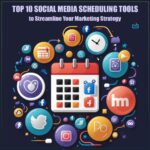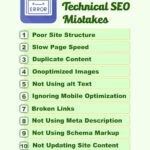How to Improve Bounce Rate: Strategies for a Stickier Website
A high bounce rate can be a digital marketer’s nightmare. It’s a metric that indicates the percentage of visitors who land on a webpage and leave without taking any further action. While a high bounce rate isn’t always a sign of trouble, it often suggests that your website may not be engaging or compelling enough to retain visitors. In this article, we’ll explore what bounce rate is, why it matters, and most importantly, how to improve it to keep your website’s visitors engaged and convert them into loyal customers.
What Is Bounce Rate?
Bounce rate, in the context of web analytics, represents the percentage of visitors who navigate away from your site after viewing only one page. This could mean they:
- Click the back button.
- Close the browser window or tab.
- Type a new URL.
- Remain idle for an extended period before leaving.
A high bounce rate can indicate that visitors aren’t finding what they expected or that the website failed to capture their interest. However, not all high bounce rates are problematic; some pages, like blog posts or single-page sites, may naturally have higher bounce rates because visitors find the information they need and exit.
Why Does Bounce Rate Matter?
A high bounce rate can have several negative consequences for your website and business:
- Lost Conversions: High bounce rates mean missed opportunities to convert visitors into customers, subscribers, or leads.
- SEO Impact: Google may interpret a high bounce rate as a sign of poor user experience, potentially affecting your search engine rankings.
- Reputation: A consistently high bounce rate can harm your website’s reputation, making it less likely for visitors to return in the future.
Now that we understand the significance of bounce rate, let’s delve into strategies to improve it.
1. Optimize Page Load Times
Slow-loading pages can frustrate visitors and prompt them to leave before your content even appears. To reduce bounce rates:
- Compress images and files.
- Use content delivery networks (CDNs).
- Minimize HTTP requests.
- Prioritize mobile responsiveness.
2. Create Engaging and Relevant Content
Your content should resonate with your target audience. Make sure your headlines and meta descriptions accurately reflect the content on the page. Engaging content keeps visitors on your site longer:
- Write compelling headlines.
- Address visitor pain points.
- Use visuals, videos, and infographics.
- Keep paragraphs and sentences concise.
3. Improve Website Navigation
Confusing navigation can lead to high bounce rates. Visitors should easily find what they’re looking for. Ensure:
- Clear and intuitive menus.
- Breadcrumbs for hierarchical sites.
- A search bar for larger websites.
- Logical page hierarchy.
4. Reduce Intrusive Pop-Ups
While pop-ups can be effective for capturing leads, they can also drive visitors away. Use them judiciously:
- Delay pop-ups until visitors have engaged with the content.
- Allow easy dismissal of pop-ups.
- Ensure mobile-friendly pop-ups.
5. Optimize for Mobile Devices
As more users access websites on mobile devices, ensuring a seamless mobile experience is crucial. Test your site’s mobile-friendliness:
- Use responsive design.
- Optimize images and fonts for mobile.
- Ensure buttons and links are touch-friendly.
6. Improve Page Readability
A cluttered or poorly formatted page can discourage visitors from staying. Ensure readability by:
- Using headings and subheadings.
- Breaking up long paragraphs.
- Using bullet points and numbered lists.
- Choosing legible fonts and font sizes.
7. Monitor and Analyze
Regularly review your website analytics to identify high-bounce pages and areas that need improvement. Tools like Google Analytics can provide valuable insights.
Related Articles
Conclusion
Reducing your website’s bounce rate is an ongoing process that involves optimizing various aspects of your site. By focusing on page load times, content quality, navigation, and user experience, you can create a more engaging and stickier website that keeps visitors around, fosters trust, and ultimately drives conversions. Remember, improving your bounce rate takes time and continuous effort, but the rewards in terms of increased engagement and conversions are well worth it.



